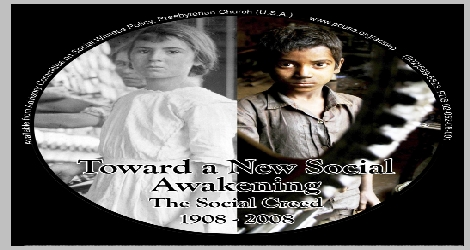[wpcol_1half id=”” class=”” style=””]
“Apartheid Economy”
Harvard economist Richard Freeman says that “income inequality in the United States has massively increased. This jump owes to the unprecedented abysmal earnings of low-paid Americans, income stagnation covering about 80 percent of all families, and an increase in upper-end incomes. The rise in inequality – greater than in most other developed countries – has reversed the equalization in income and wealth we experienced between 1945 and 1970. The United States has now cemented its traditional position as the leader in inequality among advanced countries.”[8] Freeman argues that these inequalities have the potential to create an “apartheid economy.” In an “apartheid economy,” the lives of working class and poor people are fundamentally and qualitatively different than those of middle and upper class people.
Traditionally, economists have argued that wages are based upon market competition and employers themselves have little or no power to set wages. Many owners of businesses, both small and large, will also claim that they simply can’t afford to pay higher wages. Deviating from the wage being paid by their competitors could mean that they will sustain losses and be forced out of the market. Therefore, the market itself sets limits upon workers wages through competition. However, no such limits are placed upon the salaries of corporate executives. According to Forbes.com, the highest paid CEO in 2006 was Apple executive Steve Jobs who hauled in $647 million invested restricted stock. Forbes also reported that in the same year CEO’s of America’s 500 biggest companies got an average pay raise of 38%. Economist James Galbraith challenges a traditional approach to understanding the determination of wages. He argues that we need “a rebellion against the idea that people are actually paid in proportion to the value of what they produce … We need a rebellion, not so much against existing market institutions, as against the analytical tyranny of the idea of the market, as it applies to pay.”[9]
Reduced government regulation gives major corporations tremendous power to shape American social and industrial policy. Economists, journalists, and academics lift up Wal-Mart as an example of this. Nelson Lichtenstein, Professor of History at the University of California, Santa Barbara, observes that Wal-Mart’s revenues outreach the entire country of Switzerland. As the largest employer in twenty-five states, Wal-Mart has tremendous economic clout to set the domestic standard concerning wages and benefits for many other corporations.[10]
People have varied reactions to critiques of Wal-Mart because they enjoy and benefit from cheap goods. In some areas, particularly rural areas, Wal-Mart may be the only option for shopping within several miles. For many poor people, it is also the only place that they can afford to shop. Wal-Mart is appealing to many Americans because it promotes itself as a patriotic corporation whose practices are rooted in Judeo-Christian values and the Protestant work ethic. Lichtenstein interviewed several Wal-Mart workers who commented that they appreciated the friendly atmosphere where employees remained on a first name basis with their managers. But, Wal-Mart is no friend of laborers at home or abroad.
[/wpcol_1half] [wpcol_1half_end id=”” class=”” style=””]
Wal-Mart and many other discount retailers depend upon cheap labor to amass their profits. The discount king employs 7.5 million workers around the world winning it the title of the largest private employer in Mexico, Canada, and the United States. Wal-Mart considers 32 hours a week full-time employment (8 hours less than full-time as defined in 1938 by the Fair Labor Standards Act).[11] Contrast the wages of hourly workers at home and abroad to that of Wal-Mart CEO H. Lee Scott who, according to Forbes.com, earned $60 million this decade at an average of $8.5 million a year. Journalists Peter Goodman and Philip Pan reported that Wal-Mart encourages Chinese factories to cut costs in order to supply cheaper goods. In a Chinese factory they visited in 2004, workers were paid only about $120 per month in American dollars without benefits.[12] The average Wal-Mart worker in the United States is paid $8.23 an hour (a poverty-level wage).[13]
Wal-Mart opposes unions leaving workers little or no negotiating power with the corporation, but even unionized workers employed by other companies are having a difficult time fighting these trends. Unions were once strong and enjoyed stronger support from the U.S. government. In the first half of the 20th century unions helped people fight for better wages, an eight-hour work day, and security in old age and sickness. Our government has done much in the last thirty years to limit the bargaining power of unions.
It would be unfair to cite corporations as the only organizations allowing tremendous disparities in pay between workers and upper level management. Churches sometimes take cues from the market when establishing compensation packages for their staff. In my presbytery, the Presbytery of Mid-Kentucky, the salary in 2006 for the highest paid pastor was more than $90,000.00 a year (not including benefits); two times as much as the Associate pastor on staff at the same church. Some congregations in the same presbytery are unable to pay a full-time pastor. In the Presbyterian Church (USA), minimum standards are determined for the compensation of pastors but no minimum standards are set for the fair compensation of Christian educators, church secretaries, or custodians. The result is an accepted order for pay in churches that fails to consider the needs of all those called to serve the congregation. Such disparities leave questions about the authority of churches to claim moral ascendancy in arguments for fair pay.
[/wpcol_1half_end]





Unbound Social